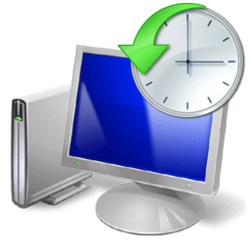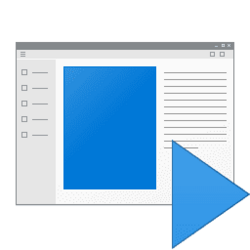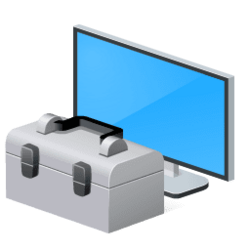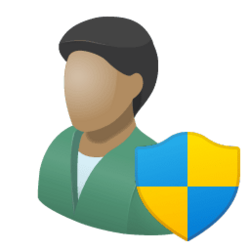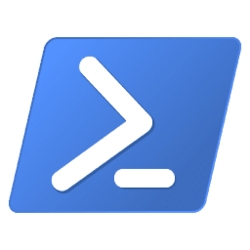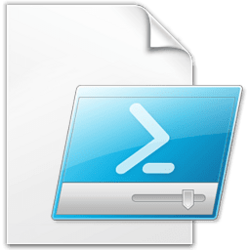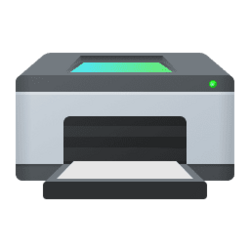Navigation
Install the app
How to install the app on iOS
Follow along with the video below to see how to install our site as a web app on your home screen.
Note: This feature may not be available in some browsers.
More options
You are using an out of date browser. It may not display this or other websites correctly.
You should upgrade or use an alternative browser.
You should upgrade or use an alternative browser.
context menu
-
Privacy and Security Add or Remove "Scan with Microsoft Defender" Context Menu in Windows 11
This tutorial will show you how to add or remove the "Scan with Microsoft Defender" context menu for all users in Windows 10 and Windows 11. Microsoft Defender Antivirus is an antivirus software that is included in Windows 11 and can help protect your device from viruses, malware, and other... -
Privacy and Security Add Windows Security to Desktop Context Menu in Windows 11
This tutorial will show you how to add "Windows Security" to the Desktop context menu for all users in Windows 10 and Windows 11. Windows Security is built-in to Windows 11 and includes an antivirus program called Microsoft Defender Antivirus. Your device will be actively protected from the... -
Personalization Add or Remove "Open in Terminal Preview" context menu in Windows 11
This tutorial will show you how to add or remove the Open in Terminal Preview context menu for your account or all users in Windows 11. The Windows Terminal Preview app contains the latest features as they are developed. Windows Terminal is a modern, fast, efficient, powerful, and productive... -
Personalization Add Control Panel to Desktop Context Menu in Windows 11
This tutorial will show you how to add "Control Panel" to the Desktop context menu for all users in Windows 10 and Windows 11. The Control Panel Desktop context menu allows you to quickly open the Control Panel in either the Category view, Icons view (large or small), or All Tasks (God Mode) on... -
Privacy and Security Add "Hash value" to Context Menu of Files in Windows 11
This tutorial will show you how to add "Hash value" to the context menu of files for all users in Windows 10 and Windows 11. The Hash value context menu allows you to get the SHA1, SHA256, SHA384, SHA512, MACTripleDES, MD5, and/or RIPEMD160 hash values (checksum) of files. The Hash value... -
Backup and Restore Add "System Protection and Restore" Context Menu in Windows 11
This tutorial will show you how to add or remove a "System Protection and Restore" desktop context menu for all users in Windows 10 and Windows 11. The System Protection and Restore context menu allows you to quickly do or undo a system restore, open and configure system protection settings... -
Devices Add AutoPlay to Desktop Context Menu in Windows 11
This tutorial will show you how to add "AutoPlay" to the Desktop context menu for all users in Windows 10 and Windows 11. The AutoPlay context menu allows users to directly open AutoPlay settings in either Settings or Control Panel. This context menu can be handy if you change your AutoPlay... -
System Add "Repair Windows Image" Context Menu in Windows 11
This tutorial will show you how to add a "Repair Windows Image" component store context menu in Windows 10 and Windows 11. If a Windows image becomes unserviceable, you can use the DISM (Deployment Imaging and Servicing Management) tool or Repair-WindowsImage cmdlet to update the files and... -
Accounts Add "Reset Permissions" to Context Menu in Windows 11
This tutorial will show you how to add or remove the "Reset Permissions" context menu to reset effective permissions of files and folders back to their default inherited permissions in Windows 10 and Windows 11. On NTFS and ReFS volumes, you can set security permissions on files and folders... -
Personalization Add or Remove "Open Linux shell here" Context Menu in Windows 11
This tutorial will show you how to add or remove the "Open Linux shell here" context menu for all users in Windows 11. When you install WSL in Windows 11, you can press the Shift key while right clicking on the background of a open folder or drive window to see and use the Open Linux shell here... -
Privacy and Security Add Turn On or Off Location Services Context Menu in Windows 11
This tutorial will show you how to add a turn on or off "Location Services" context menu for all users in Windows 10 and Windows 11. The Location Services context menu added by this tutorial will allow you to quickly turn on or turn off location services for the device (all users) or for apps... -
Personalization Add or Remove "Open PowerShell window here" Context Menu in Windows 11
This tutorial will show you how to add or remove the "Open PowerShell window here" context menu for all users in Windows 11. Windows PowerShell is a task-based command-line shell and scripting language designed especially for system administration. Built on the .NET Framework, Windows... -
Personalization Add or Remove "Personalize" Desktop context menu in Windows 11
This tutorial will show you how to add or remove the "Personalize" desktop context menu for all users in Windows 11. When you right click or press and hold on your desktop and click/tap on Personalize, it will open the Settings > Personalization settings page. You must be signed in as an... -
Personalization Add or Remove "Display settings" Desktop context menu in Windows 11
This tutorial will show you how to add or remove the "Display settings" desktop context menu for all users in Windows 11. When you right click or press and hold on your desktop and click/tap on Display settings, it will open the Settings > System > Display settings page. You must be signed in... -
Personalization Add or Remove "Edit in Notepad" Context Menu in Windows 11
This tutorial will show you how to add or remove the "Edit in Notepad" context menu for your account or all users in Windows 11. Notepad is a fast and simple text editor that can be used to view, edit, and search through plain text documents instantly. Starting with Notepad version... -
Personalization Add "Edit or Run with" to PS1 File Context Menu in Windows 11
This tutorial will show you how to add or remove a custom "Edit or Run with" cascading context menu for PowerShell .ps1 files for all users in Windows 11. A PS1 file is a script, or cmdlet, used by Windows PowerShell. The Edit or Run with cascading context menu includes the following items for... -
Apps Add Close All Apps context menu in Windows 11
This tutorial will show you how to add "Close All Apps" to the desktop context menu for all users in Windows 10 and Windows 11. Sometimes you may need or want to quickly close all open apps at once instead of one at a time without shutting down or restarting the computer. While you must be... -
Browsers and Mail Enable or Disable Smart Actions on Context Menus in Microsoft Edge
This tutorial will show you how to enable or disable showing smart actions like "Define" on full context menus for selected words in Microsoft Edge for your account in Windows 10 and Windows 11. The Microsoft Edge web browser is based on Chromium and was released on January 15, 2020. It is... -
Personalization Add Show Recycle Confirmation to Recycle Bin Context Menu in Windows 11
This tutorial will show you how to add or remove "Show recycle confirmation" on the Recycle Bin context menu for all users in Windows 10 and Windows 11. The Recycle Bin provides a safety net when deleting files or folders. When you delete any of these items from a drive, Windows places it in... -
Devices Add Reset and Clear Print Spooler context menu in Windows 11
This tutorial will show you how to add "Reset and Clear Print Spooler" to the desktop context menu for all users in Windows 10 and Windows 11. The primary component of the printing interface is the print spooler. The print spooler is an executable file that manages the printing process...






